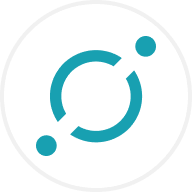A MetisDAO (METIS) é uma organização autônoma descentralizada (DAO) pioneira que visa revolucionar a colaboração e capacitar indivíduos e organizações no espaço blockchain. Construída sobre a blockchain Ethereum como uma solução de Camada 2, a Metis fornece uma infraestrutura abrangente para construir, dimensionar e gerenciar aplicativos descentralizados (dApps) e DAOs. Seu token de utilidade nativo, METIS, facilita transações contínuas, incentiva os participantes da rede e fortalece os mecanismos de governança em seu ecossistema.
O que é a MetisDAO
No cenário em constante evolução da tecnologia blockchain, as DAOs ganharam força significativa. Eles visam revolucionar os sistemas tradicionais, permitindo a tomada de decisão descentralizada e a governança comunitária. Entre essas tecnologias emergentes, a MetisDAO se destaca como uma plataforma promissora que permite que indivíduos e organizações colaborem perfeitamente de maneira descentralizada.
A equipe da MetisDAO
Por trás do desenvolvimento da MetisDAO está uma equipe talentosa e diversificada de entusiastas e empreendedores de blockchain. Liderada pela CEO Elena Sinelnikova, fundadora da Cryptochicks, a equipe reúne experiência em tecnologia blockchain, sistemas descentralizados e construção de comunidades. Eles são movidos pela visão de criar um ecossistema inclusivo e eficiente que capacita os participantes a colaborar e criar valor coletivamente.
Como é o funcionamento da MetisDAO
Em sua essência, o MetisDAO fornece uma infraestrutura abrangente que permite aos usuários criar, dimensionar e gerenciar dApps e DAOs facilmente. A MetisDAO oferece ferramentas e serviços robustos, incluindo um sistema de identidade descentralizado, mecanismos de governança e soluções de gerenciamento de recursos.
O token nativo da MetisDAO: METIS
O ecossistema MetisDAO opera em seu token de utilidade nativo, chamado METIS. Esse token desempenha um papel crucial na facilitação de transações, incentivando os participantes da rede e fortalecendo os mecanismos de governança dentro do ecossistema. Como token de utilidade, a Metis alimenta as operações de dApps e DAOs construídos na plataforma MetisDAO.
Tokenomics do METIS
O METIS possui uma estrutura tokennomics bem definida, projetada para garantir a estabilidade e promover o crescimento do ecossistema. A oferta total de tokens METIS atualmente é de 5.410.000 tokens, com 4.466.402 em circulação.
Uma parte do fornecimento do token é alocada para incentivar os primeiros usuários, colaboradores e a comunidade. Essa alocação incentiva a participação ativa e a contribuição para o ecossistema MetisDAO.
Como realizar o staking do METIS
O staking do METIS é um aspecto crucial do ecossistema, permitindo que os detentores de tokens participem da proteção da rede e ganhem recompensas ativamente. A MetisDAO oferece várias opções de staking, incluindo staking na rede principal ou participação na mineração de liquidez em exchanges descentralizadas (DEXs) suportadas.
Casos de uso do METIS
O METIS tem vários casos de uso dentro do ecossistema MetisDAO. Eles servem como o principal meio de troca para transações dentro da rede. Os tokens Metis são usados para pagar taxas de transação, acessar serviços e participar de decisões de governança. Eles também são usados para incentivar usuários, desenvolvedores e colaboradores, impulsionando a adoção e o crescimento.
Distribuição do token METIS
A distribuição de tokens METIS é cuidadosamente estruturada para garantir justiça e sustentabilidade a longo prazo.
- Os primeiros 49,3% dos tokens METIS foram cunhados em 2021 para o lançamento a frio, equipe, consultores, investidores e ecossistema e desenvolvimento da comunidade
- 4,86 por cento para benefícios comunitários, incluindo mineração
- 10 por cento para mineração de Rangers em estágio inicial
- 3 por cento para o desenvolvimento da comunidade na próxima Era da Descoberta
- 32,84 por cento para mineração relacionada a transações na próxima Era da Descoberta
O futuro promissor da MetisDAO
A MetisDAO é uma plataforma inovadora que promove a colaboração descentralizada e capacita indivíduos e organizações a criar e dimensionar seus aplicativos descentralizados e DAOs. Com uma infraestrutura robusta, uma comunidade engajada e uma economia de token bem projetada, a MetisDAO está pronta para moldar o futuro da governança descentralizada e contribuir para o crescimento do ecossistema blockchain.













